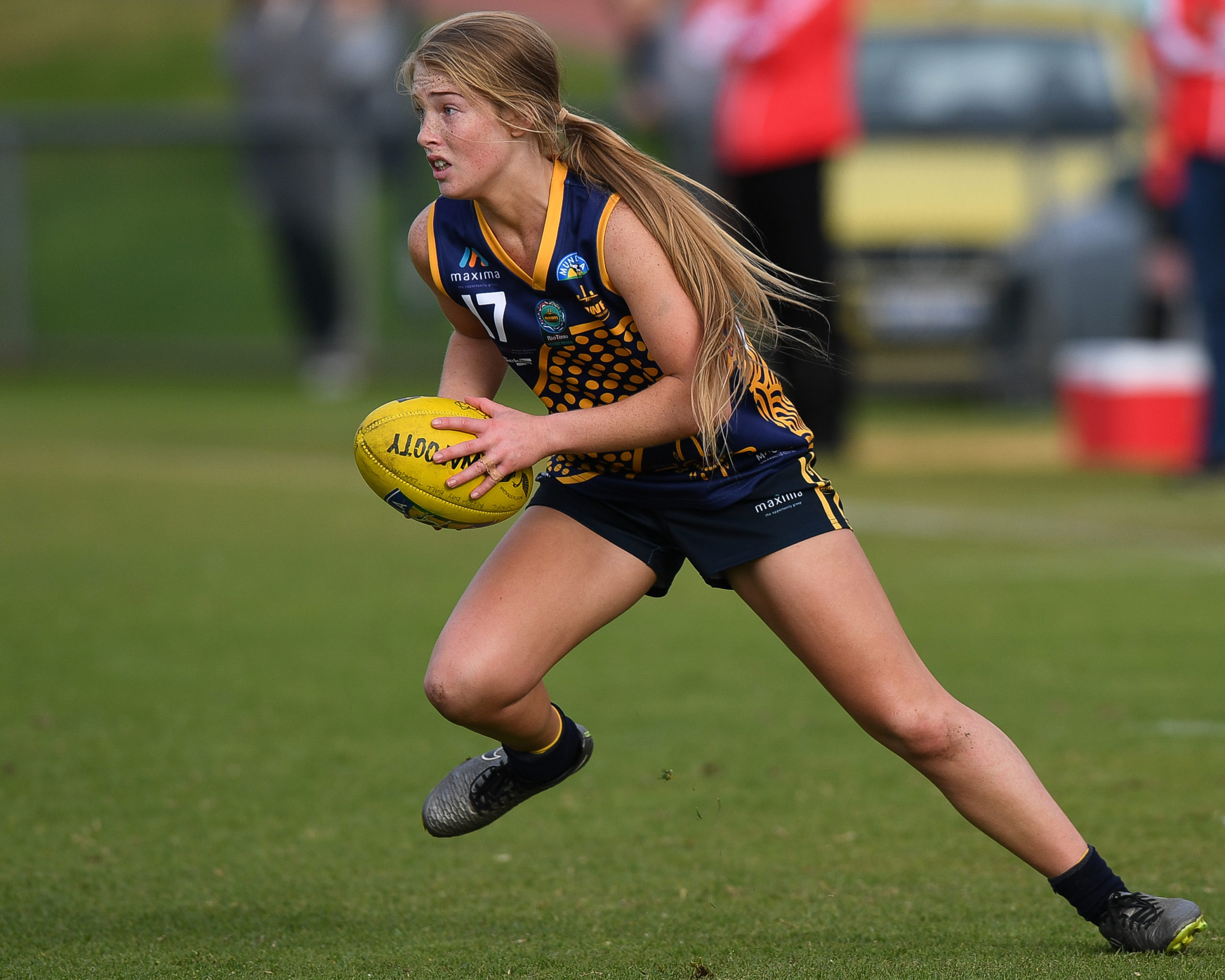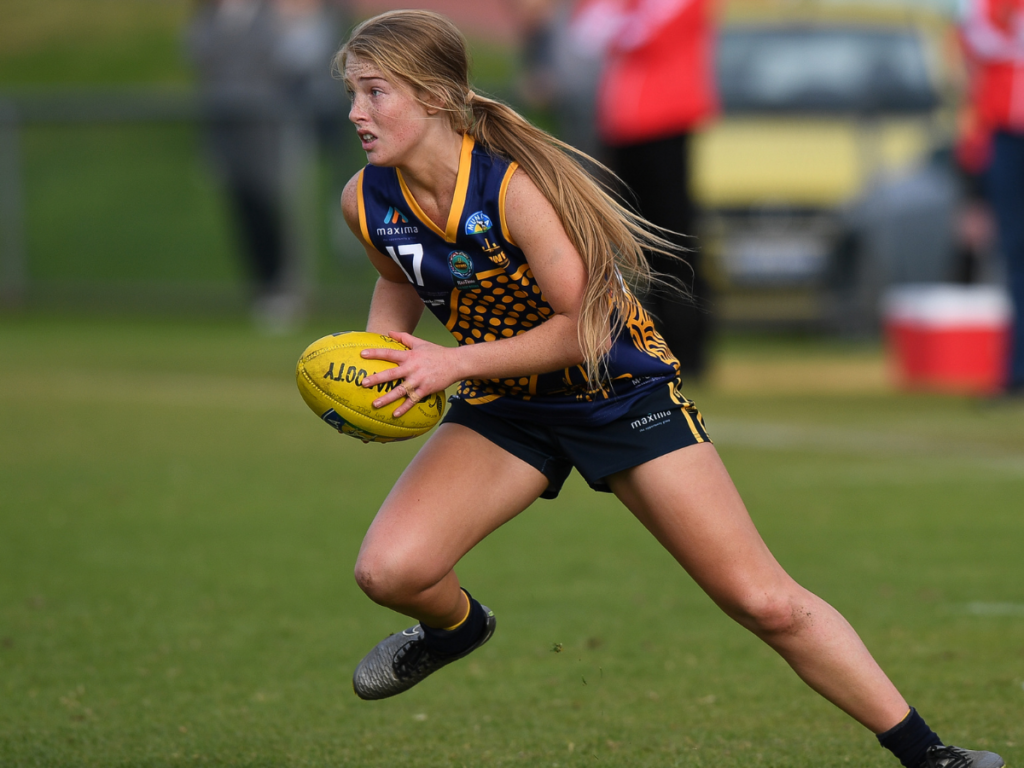

Australian rules football is both a great team sport, and makes for an excellent endurance workout, with players quickly accelerating to high-speed running, making swift changes in direction, kicking, ball-handling and tackling over an 80-minute game. At a professional level, game analysis shows that every game sees the players cover on average 13.2km, make 19 tackles, 205 kicks, 169 handballs and 88 marks. That’s a massive demand on the body in a short timeframe, and with that, comes the very real risk of injury.
With over 1.2 million players every year, and the lower limbs being the most common area of injury among participants, you can bet that our podiatrists see a wide variety of football injuries every year. Here are the top five injuries we see in Aussie rules football, why they occur, how they’re treated, and what you can be doing to speed up your recovery.
Hamstring Strains
What Is It?
Hamstring strains have been repeatedly named as the top AFL injury. The hamstrings are the three muscles at the back of the thigh that work hard to help bend the knee and straighten the hip. A hamstring strain means that one or more of the muscles have been forcefully stretched past a point that it could safely manage, and the result is muscle or tendon damage (a strain) – or even a tear.
What Does It Feel Like?
You’ll feel pain or tenderness at the back of your thigh, and you may find it difficult to walk up hills or stairs, or put weight on the affected leg. Your leg may also feel weak, and if the damage is severe, you may feel a popping sensation at the time of injury.
Why Does It Occur?
AFL involves a lot of movements that place the hamstrings at their maximum tension, and hence create plenty of opportunities for them to be overloaded. This includes high-speed running, kicking and frequently collecting the ball from the ground which requires players to lean forwards while bending their hips and extending their knees – a vulnerable position for the hamstrings.
Ankle Sprains
What Is It?
Ankle sprains occur from rolling on the inside or outside of the ankle, thereby damaging the ligaments that are responsible for supporting and stabilising the ankle joint (and preventing this rolling movement).
What Does It Feel Like?
You’ll feel immediate pain on the side of the ankle that you roll, which is most commonly the outside. The pain will come on immediately following the ankle sprain, and you may find it difficult to put weight on the foot and ankle.
Why Does It Occur?
You have to make quick decisions about which way to run with the ball, quickly change directions if needed, and do so while running at fast speeds. This change in momentum can contribute to ankle sprains, as can a player landing on the foot of another where the foot is twisting, or players who have their foot planted on the ground who then rotate their bodies to pass the ball while being tackled.
Calf Strains
What Is It?
Calf strains were the second most common AFL injury in the 2020 professional season. Your calves are the muscles at the back of your lower leg. A calf strain means that you have overloaded one or more of these muscles to the point of damage.
What Does It Feel Like?
Depending on the severity, you may feel pain at the back of the lower leg or a tender pulling sensation. The pain may continue to throb, or you may feel some weakness in the area and pain when standing. If the injury is severe, you may also feel a popping or snapping sound at the time of injury.
Why Does It Occur?
Calf injuries tend to occur in fast-paced sports that require sprinting, running, jumping or other sudden movements. Given that the calves can take on forces of 3.5 times our body weight when we run, when we push them hard during these sports, they can get overloaded and be vulnerable to injury.
ACL Injuries (Knee Pain)
What Is It?
Your anterior cruciate ligament (ACL) is a ligament present inside of the knee joint that connects the femur (thigh bone) with the tibia (shin bone), helping stabilise the joint and prevent the bones from moving out of the joint.
What Does It Feel Like?
ACL injuries will leave the knee feeling painful, weak and unstable. The knee is likely to swell and stiffen. Occasionally, if the ACL is completely ruptured, there may be a sudden popping sensation.
Why Does It Occur?
Australian football has many sudden stops and kicks, quick direction changes, and twisting motions at the knee that can damage the ACL. When we change directions quickly to respond to an opponent’s actions, this can stress the ligaments in directions that they are not prepared to handle. Australian football has the second-highest incidence of ACL injuries per participant, second only to skiing. Interestingly, female players have a higher incidence of ACL injuries than male participants, and many studies are exploring the causes behind this.
Groin Strains
What Is It?
Groin strains describe damage to the muscles of the inner thigh (the groin region). These are important muscles that connect the pelvis to the inner thigh to help stabilise the pelvis and allow our leg to move towards the midline of the body. There is another injury sustained during AFL in the groin area that is called Osteitis Pubis, which describes the inflammation of the pubic symphysis, the joint in the middle of the two pubic joints of the pelvis.
What Does It Feel Like?
You may feel pain or tenderness in the groin area on the inside of the thigh. You may find it painful to bring your legs together or raise your knees, or you may have difficulty moving the damaged leg. The area may also become swollen or bruised, and you may notice a popping sound at the time of injury.
Why Does It Occur?
Groin injuries can occur when players suddenly change direction, lunge, accelerate during running, or during kicking. This can place significant strain on the groin region, including its bones and muscles.
Treating Football Injuries
Treating football injuries should be done as soon as you notice pain or discomfort, as the sooner the problem is diagnosed and care is started, the sooner you can take the right steps to prevent the injury from worsening and the sooner you can be on the road to recovery and back on the field.
The first step is to have a consultation with your podiatrist. Whether it’s one of these five injuries or another like a stress fracture of the foot, your podiatrist is qualified to assess and diagnose the injury and understand its likely causes. While AFL does place high demands on your body that make you vulnerable to injury, there are many other factors that contribute to injury such as muscle imbalances, muscle weakness, poor flexibility, your foot posture, and becoming fatigued towards the end of a long game, which may see players adopt a less-than-ideal technique.
Your podiatrist will create a personalised treatment based on the severity of your injury, the results of your biomechanical and gait assessment, footwear, training intensity and frequency, goals and more.
To help prevent football injuries, don’t forget to:
- Complete your pre-season training so your body is ready for the on-season
- Focus on developing good techniques
- Wear good, supportive football boots
- If your foot posture is a concern or could hold you back, consult a podiatrist about whether custom foot orthotics could help optimise your performance and reduce injury risk
- Warm up before a game
- Practice active recovery after a game
- Stay well hydrated
- Always seek help for any concerns about your health or body, even if your discomfort is mild. Pain is your body’s natural warning sign that something is going wrong – or is about to.
Get On Top Of Your Game, Today
If you’re worried about any pains, or want to start your preseason off on the best foot to help prevent injury, start with a consultation with your podiatrist. As the experts in foot health, podiatrists have a comprehensive understanding of the demands that sports place on the lower limbs, and how to prevent or overcome them for your body.
Book your appointment with us online here or call us on 1800 FOOT DR.
References
[1] https://www.ncbi.nlm.nih.gov/pmc/articles/PMC5958447/figure/fig1-1941738117726070/
[2] https://www.ncbi.nlm.nih.gov/pmc/articles/PMC5958447/


